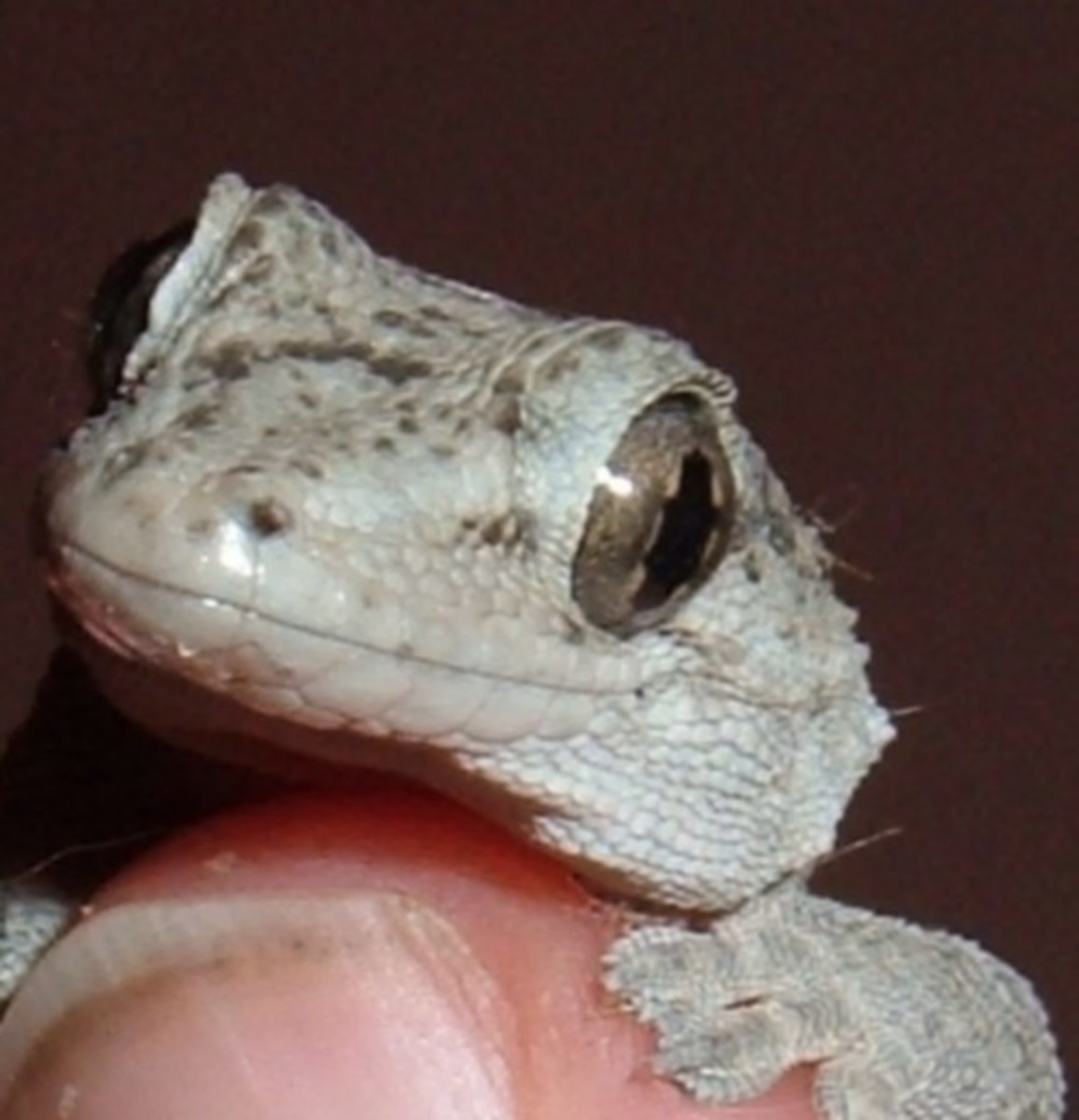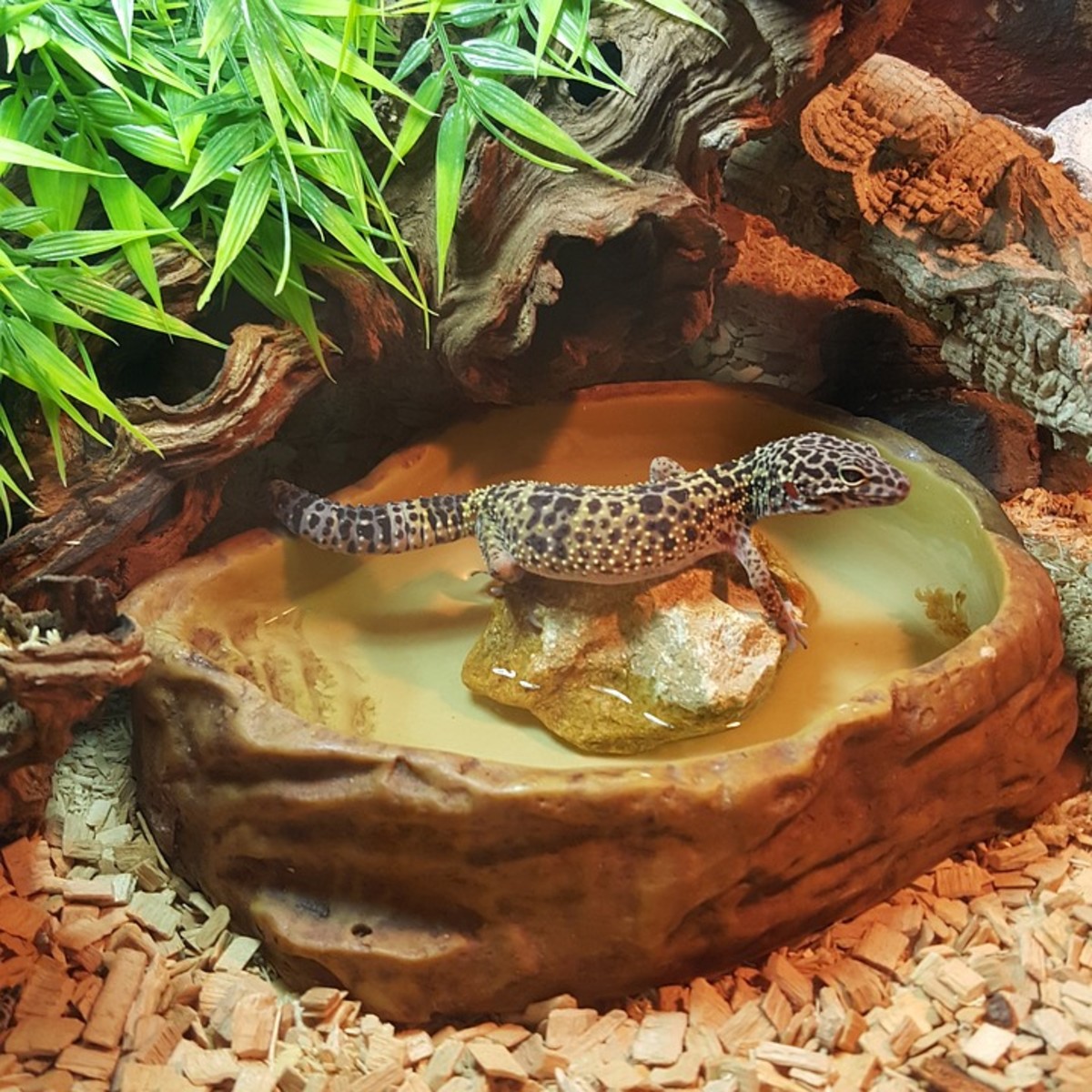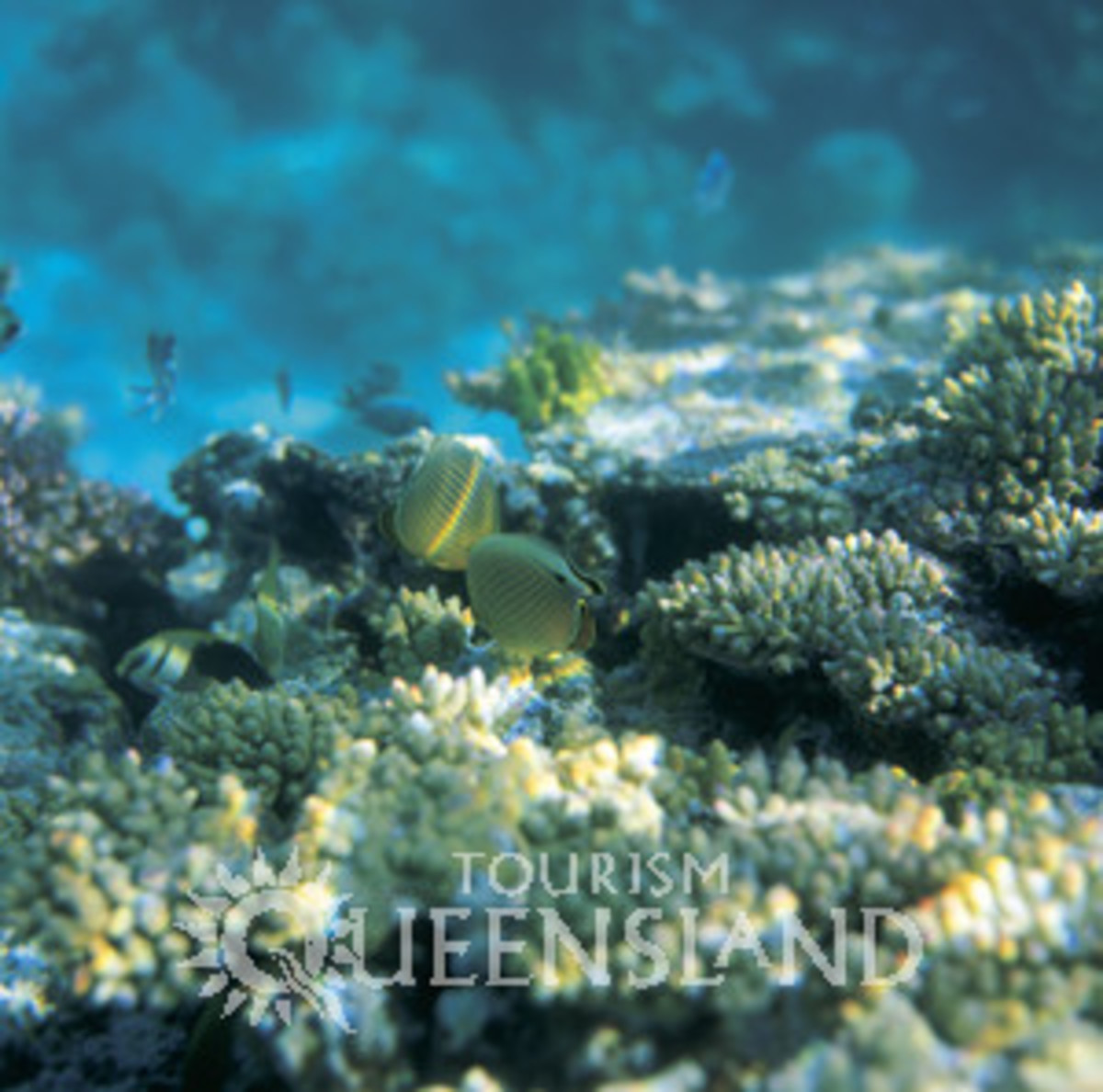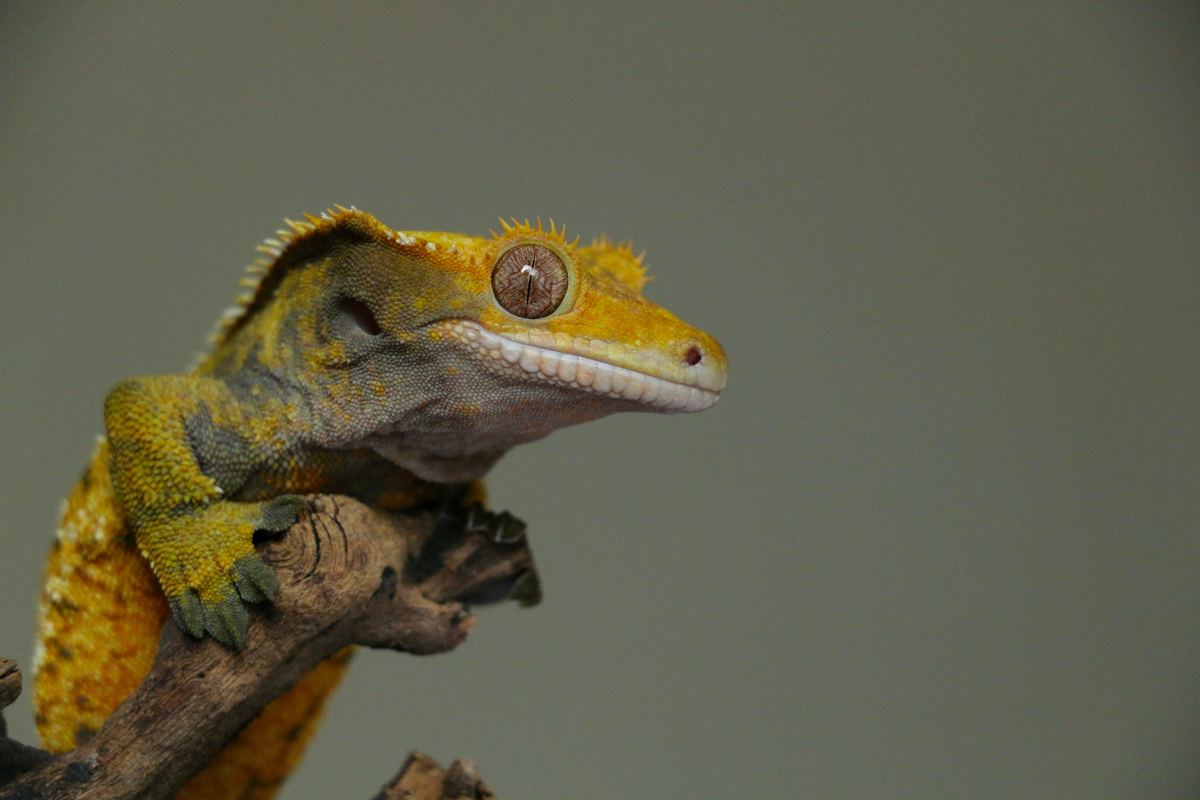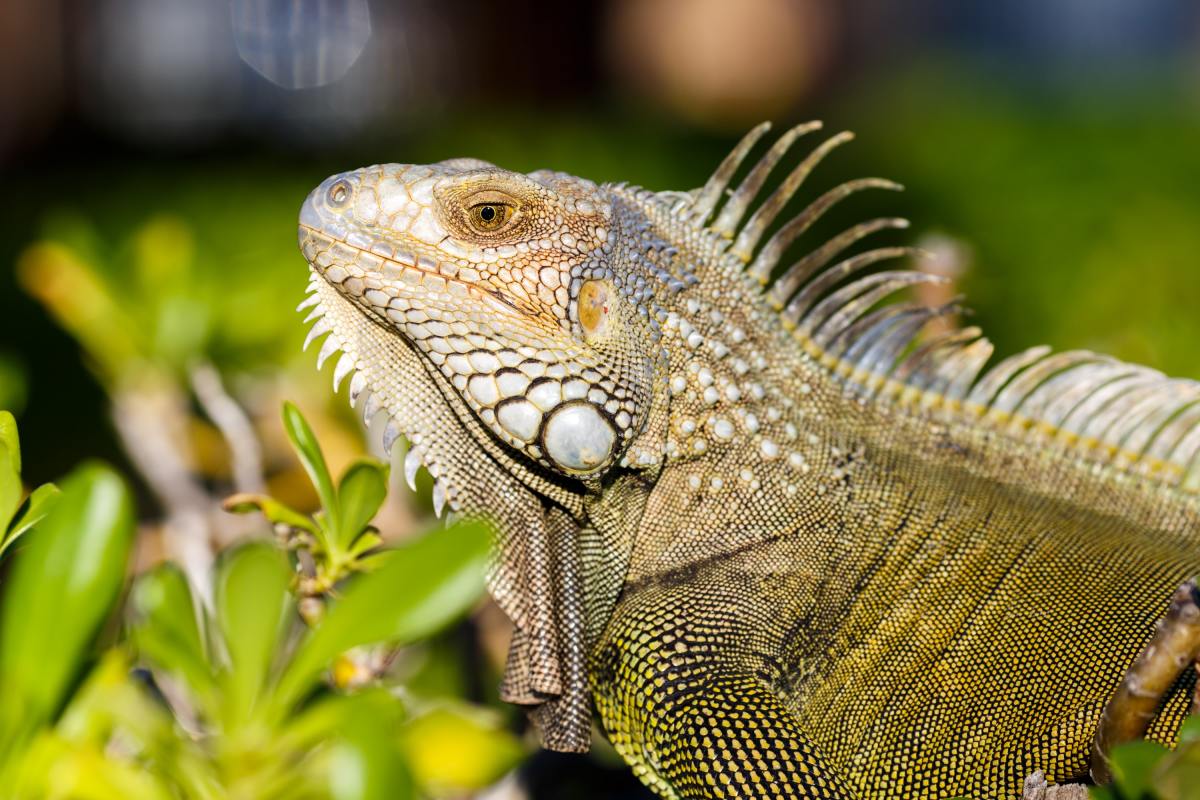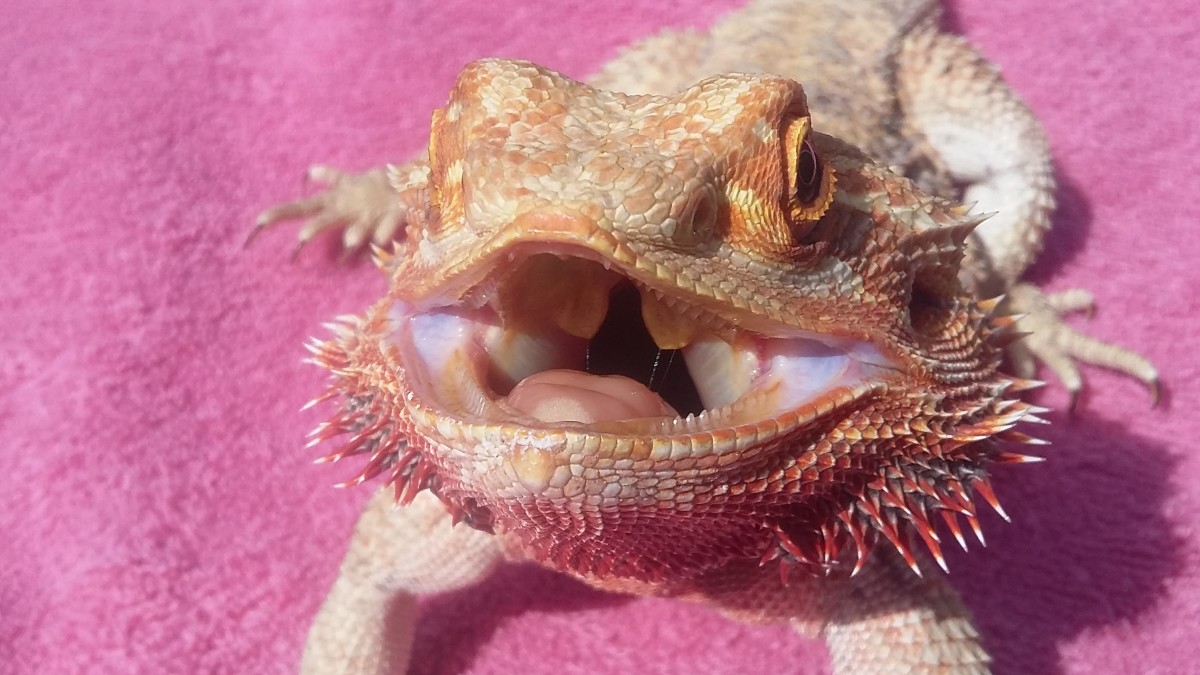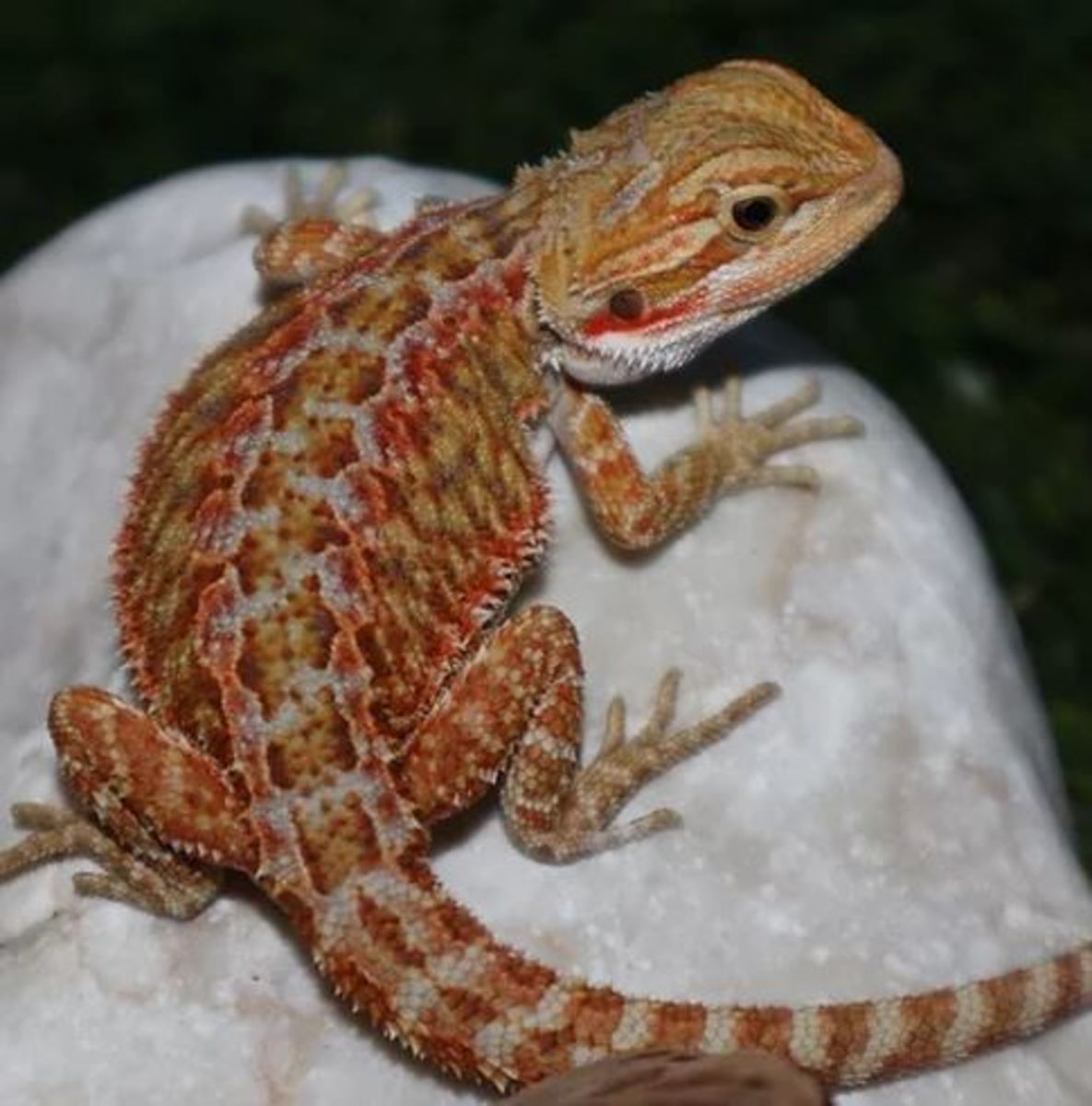Blue Tongue Skink
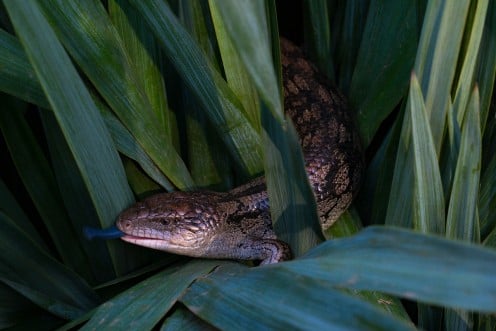
Who is He?
The blue tongue Skink is a reptile typical of the savannas and deserts of eastern Australia. Its body is elongated, cylindrical and solid with reduced limbs and small scales, smooth and shiny. It has a neck of considerable size, as thick as it is stocky; the legs are short and strong, and are topped by four toes. As for coloration, it ranges from grey to brown with wide darker, reddish or brown bands (especially towards the tail). Its head is very broad, triangular in shape, and it has a strong jaw (while behind the eyes there is a darkened horizontal band). There are examples of pink body, although its most peculiar characteristic is the tongue, blue. As for the distinction between males and females, the former usually have the largest head, as well as bulges of hemipenises on both sides of the tail (when adult). It is a terrestrial and diurnal animal, relatively active, although it likes to dig (especially to bury itself during the night). Males are very territorial with each other. An adult bluetongue Skink can reach 50 centimeters and live for about 20 years.
The bluetongue Skink looks like a snake with small legs. If you come to Faunia you can observe how it behaves in a recreation of its habitat.
What Does the Blue Tongue Skink Eat?
The Blue Tongue Skink feeds on a variety of small animals (insects and other reptiles). Some plant materials and fruits are also part of its diet.
How Does the BlueTongue Skink Reproduce?
It is an ovoviviparous species, that is to say, it reproduces through eggs that remain in the body of the mothers for their development. Each female is capable of laying 10 to 15 eggs, which when hatched give rise to young that, at birth, can measure about 13 centimeters. This offspring is also enveloped in a membrane that is immediately discarded (and used as food).
Did You Know That?
It is a very curious species. When it is disturbed, its reaction is to open its mouth to take out its blue tongue, while swelling its body and whistling forcefully. He may lose his tail in case of danger.
Care of the BlueTongue Lizard
There are many species of this lizard, whose scientific name is Tiliqua. They originate in Australia, New Guinea and Tasmania and are found in areas of open forest, on the banks of the jungle and in semi-desert areas. All eSkinks have a wide, triangular head, with robust bodies and very short, small legs, with delicate toes. They are characterized by a deep blue tongue inside a well-pinked mouth. They are quite docile and easy to handle and domesticate; you should only be careful to wash your hands well if you manipulated their food, because if they feel an appetizing smell they can try to bite your fingers, which look so much like a small mouse! The size varies a little according to the species, but they measure around 50 cm when they are adults. Their life expectancy is 10 to 20 years depending on the care and food they receive.
Habitat of the Blue Tongue Lizard
They need a big habitat because in their natural environment they walk a lot, so the ideal is a tank of between 200 and 250 liters. As a substrate you can use wood shavings that do not have toxic emissions or have been treated with insecticides. Be sure to provide hiding places, such as cardboard boxes, barks, PVC pipes or logs where it can be hidden. Trunks and branches will also help her climb on them and rest at different levels. ESkinks are not climbers like iguanas and other lizards, but they do like to climb on flat surfaces and this also serves as exercise and to better adapt to life in captivity. Another important accessory is a container with a wet substrate or with moss or a wet towel that will be used during the moulting season.
The ambient temperature should have a gradient between 24 and 29° C, with a resting area around 35°C. It is important that you verify the different temperatures in the enclosure using thermometers. During the night it is convenient that the temperature drops to 21°C. There may be small variations in these values depending on the species, so take a good look at your blue tongue lizard to determine which temperatures it is most comfortable with. In general, a heater under the tank and an incandescent light in the rest area are sufficient, but always check with thermometers.
You should also provide a good source of UVB/UVA radiation so that it can synthesize the vitamin D needed to absorb calcium from food. Direct sunlight is best if you live in a region where the outside temperature allows it. Always make sure that part of the cage is cool and the Skink can take refuge in it if needed. If using artificial light, look for good quality tubes approved for reptiles and with the full spectrum.
Bluetongue lizards need a large water container where they can bathe and easily get in and out. It is common for them to defecate in it, so you will need to clean it regularly.
Feeding the Blue Tongue Lizard
ESkinks are omnivorous, so they need both animal and vegetable food. Specialists recommend 60% plant matter and 40% animal origin. Basically they should be given a vegetable salad similar to that of green iguanas. The variety is essential to provide a good balance of nutrients, especially calcium and phosphorus. I recommend that you read the article on iguana nutrition, as there are vegetables that are good or harmful to lizards.
Bluetongue lizards love strawberries, peaches, bananas, pears and other juicy fruits, so always try to have a small portion reserved for them. You can freeze a little during the season to have when you can't get them in the shops.
Animal food consists of worms of different types, small crickets and newborn mice. As they grow they may be offered larger prey, such as worms, Zoophoba larvae and pupae, etc. To ensure a good supply of minerals and vitamins, add a little reptile multivitamin to food by sprinkling it on its ration.
As long as your pet is small, offer him all the food he wants to eat; as he grows you will see that the frequency decreases until you have to feed him 2 to 4 times a week. When he's hungry, he'll be very eloquent and will jump on anything that moves, so if you pay a little attention to him, it's unlikely you won't notice that he wants his food.
How to Take Care of a Blue Tongue Escinco?
The Escinco de lengua azul, as its name indicates, is a lizard with a beautiful cobalt blue tongue. It uses it as a defense, frightening its opponents by its size and color. Although it is a very territorial male, that is to say aggressive with other males, it is not at all dangerous for the human being, since they are quite tame and are easily accustomed to human company. They have a gentle character and rarely try to bite.
It never hurts to remember that lizards are not like other pets, at some point you may be bothered by constant signs of love. So always treat him with respect and do not violate his personal space. You should always be alert to the animal's uncomfortable signals.
This little friend comes from Australia, New Guinea and Tasmania. It is generally found in forests, fields and even in semi-desert habitat.
Our friend's habitat
It needs a 200 litre terrarium, with a lid as this little animal can become very active and climb the walls of our terrarium. It is always recommended that the terrarium material is made of glass, as it gives an excellent clarity when observing our blue tongue scinco. But it will also depend on our budget.
We must choose our substrate well, as it is adapted to habitat in which there is a certain level of humidity, which should not be more than 50%. So it is advisable to use peat or coconut fiber, which maintain moisture. Remember that it is good that the terrarium is well ventilated, otherwise moisture will accumulate and will be a breeding ground for bacteria that would end up making our animal sick.
Other important characteristics
As far as light is concerned, our little friend is a daytime lizard that benefits from the sun's UV rays, so special lamps should be purchased. You can also take sunbathing outside the terrarium, as the glass filters out the sun's rays. Always under supervision and remembering that you need shaded places where you can lie down when the sun is sufficient.
It is daytime so commonly seek a shelter for the night, we can do so with a plastic box, decorated with mosses. It does not need greater demands of night light.
Temperature and Food
In order to have an optimum temperature, it would be advisable to provide "thermal floors" i.e. regions in which different temperatures are handled in the terrarium, this is done with a thermal blanket or cable placed 1/3 of the terrarium. Optimal temperatures range from 21 (on the cold side) to 31 degrees. This allows you to decide in which area you feel most comfortable.
The blue tongue scinco needs an omnivorous diet where 60% must come from vegetables, and 40% must be of animal origin. Always previously sprinkled with calcium and supplements for lizards. This to ensure good food and nutrition of our friend.
This content is accurate and true to the best of the author’s knowledge and is not meant to substitute for formal and individualized advice from a qualified professional.

